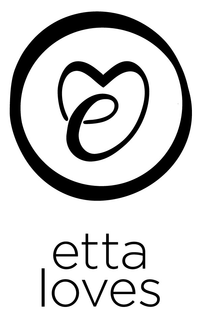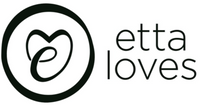OUR MAGIC IS BY DESIGN, NOT CHANCE
From the colours we use, the scales within each pattern and the placement and space between each shape, everything is designed alongside our consultant Orthoptist Laura and PHd students' recommendations - using the latest research in infant vision - to support babies' visual and cognitive development.
As a result, our patterns provide the perfect visual experience for your baby, and will look different to your baby from week to week as their vision develops. This is the magic of Etta Loves and what makes us unique in the world.
Read on to learn more about how a baby’s vision develops in their first year, or click here to learn about our scientific partnership with The University of Sussex
AT BIRTH A BABY’S RETINA IS NOT FULLY DEVELOPED AND THEIR VISION IS BLURRY
A newborn's retina can only detect large contrasts between light and dark.
This is because the receptor cells which detect colour are immature and it takes time for these cells to develop and for the brain to make sense of the signals from them.
This, along with their blurry vision, means it is much easier for a newborn to see very high contrast things - with black and white offering the highest of contrasts. However it's not true that they only see in black and white...
VISUAL STIMULATION MAKES A BABY’S BRAIN DEVELOP
Babies have to learn how to see. And it's only by using their eyes do the critical eye-brain connections develop that enable them to see the world more clearly and eventually in glorious technicolour.
The world provides a great mix of stimulation for a baby to allow their senses to develop. However, using Etta Loves products - which have been designed to be visually attractive to a young infant - are ideal to stimulate visual interest to help the connections form between the eye and the brain.
PATTERNS HELP BABIES TO SEE
Exposure to patterns is of crucial importance to a baby’s visual development because patterns offer an important source of information about their environment, and in fact, research has shown that babies require patterned input for proper cognitive development.
Between birth and 2 months old babies love looking at patterns made up of lines, whereas from 2 months onwards they prefer round shapes, especially bullseyes, and by 4 months old they will already enjoy looking for odd ones out!
DEVELOPING COLOUR VISION
Babies are born with the receptor cells to detect colour, but these are immature so it takes time for these cells to develop and for the brain to make sense of the signals from them.
However babies don't just see in black and white at birth, as many can detect a strong red and green from birth. And by around 2-3 months they will be able to make out a strong blue and yellow.
They are not able to detect the difference between more subtle colours until much later, so try to ensure that you choose things for them that are visible at the stage of their development.
WE MAKE IT EASIER FOR PARENTS
The science at the heart of Etta Loves ensures that babies are stimulated and mesmerised, giving parents a priceless moment of calm and the confidence that you are supporting their visual and cognitive development.



